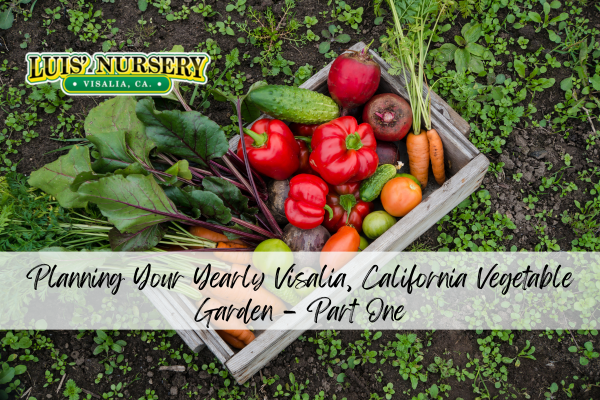It’s officially a new year! We have ushered in 2024 and are off and running toward a new future, new goals, new possibilities, and new growth. Speaking of growth… are you ready to start planning your vegetable garden this year? How do you know when to plant what? We wanted to help you take the guesswork out and give you a little mini month by month guide to planting your vegetable garden this year.
Here is part 1 of our 4-part series:
January
Here we are in the first month of the new year and it’s time to get busy planning our gardens. If you aren’t one of the few that have a year-round indoor system, it is important to determine the right time of year to start seeds and when to plant outdoors. January is the time to prep for success.
- Sketch out a design idea for your garden. You can create a map with the outline of your beds and then plan your arrangement for the coming season. Crops should be rotated each year, so look at previous maps (if you have them) or start this new cycle now. Bonus – you can keep track of successes and failures on your map and help with better planning in the future.
- If starting plants from seed, start ordering them early as they can sell out fast. Look for new and improved varieties that have increased disease resistance, fruiting, and flavor.
- If you’re starting from seedlings, make a shopping list before heading over to the nursery. Ask the staff for recommendations if you’re new to gardening.
Continue your cool season crops: broccoli, cauliflower, Swiss Chard, spinach, radishes, beets, parsnips, peas, collards, arugula etc.
February
As the day temps start to hit the high 60’s-70’s you can start prepping your seeds. You should have your seed orders finished up and as they start arriving make a chart of which date to start each variety working backward from the last frost date for our area. You want to make sure that they germinate at the correct time. One idea is to write down a planting date on each seed packet and then organize them chronologically.
- Make sure you have everything you need to start your seeds. Check that you have growing mix, seed trays, as well as peat pots if you plan to use them.
- Check the condition of your gardening tools and replace, clean, or sharpen as needed.
- Around Valentine’s Day is a good timeline to transplant those tomatoes you have been growing from seed indoors. You can also plant starters that you pick up from your local nursery.
- Start seeding indoors: Eggplants, Summer Squash, Kale, Swiss Chard, Cucumbers
March
The temps are now working their way up to the 70’s-80’s here in Visalia. It’s a good time to start checking those sprinkler systems for efficient water use and adjust irrigation if needed.
- Plant culinary herb and medicinal herbs. This will start to attract pollinators and help you get your kitchen spices restocked.
- Transplant your Peppers/Chiles. These lovely veggies prefer warmer weather and as the highs are consistently in the 70’s around mid-March it’s the right time to get them transplanted.
- You could also plant a few other warm season crops such as tomatoes, eggplant, beans, squash, and corn.
These are just a few guidelines for the start of our planting year. We will follow up with the next quarter of our gardening year in coming months. Please stop on by the nursery to pick up your seeds and transplants and we are happy to help you answer any questions you might have. Happy Gardening!



